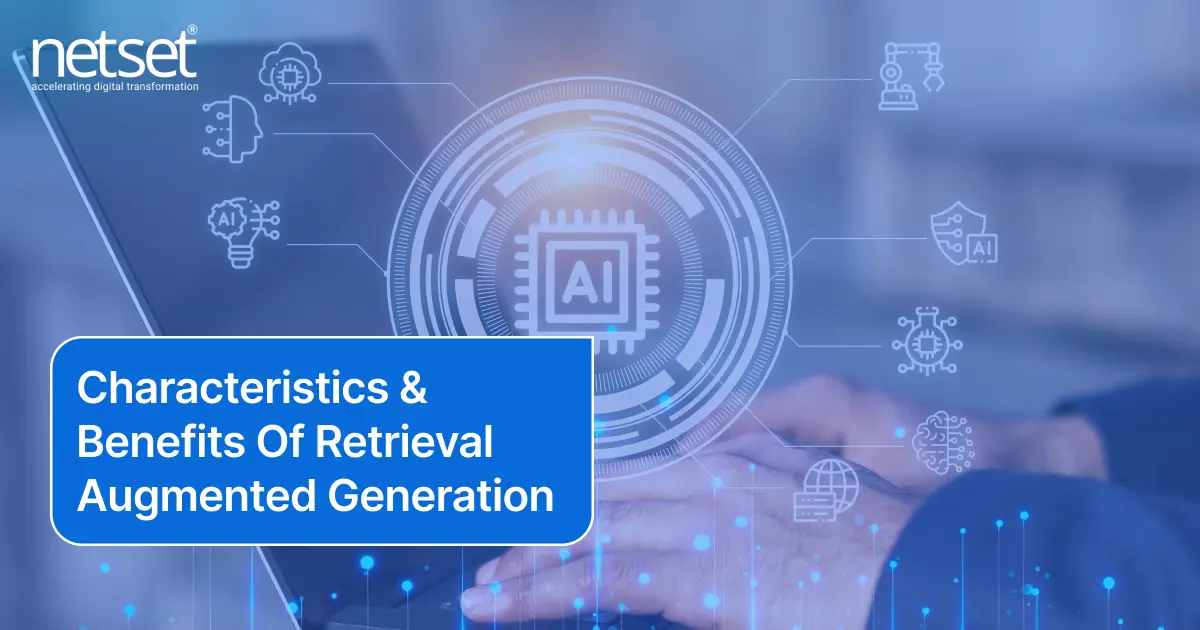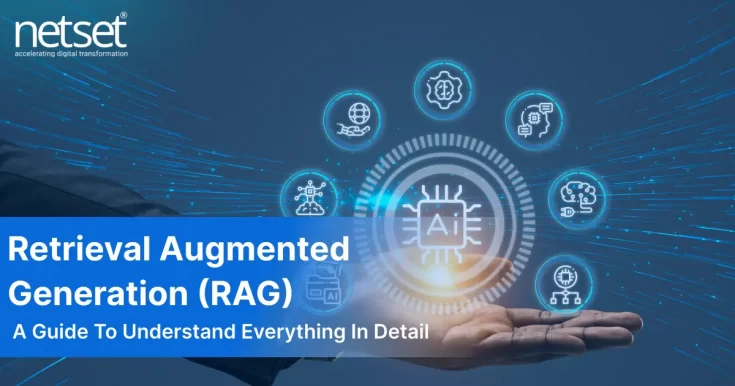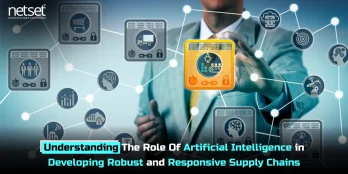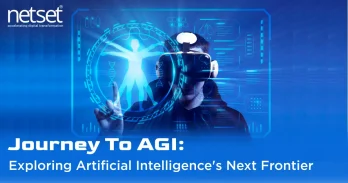Have you ever encountered a situation where you ask ChatGPT for some statistics and you get data from April 2023 or earlier? Did you think about why it always provides us with old data or information and not the latest one? There is no doubt that the data provided by ChatGPT or other ChatGPT models may be correct but it is not from existing sources. Although the work these ChatGPT models do is admirable, their knowledge is limited information as of April 2023. This is because ChatGPT was trained on the data provided to it (as of April 2023).
Language models that are pre-trained can learn a lot of detailed information from data. They do this by collecting knowledge from a large collection of literature and using it to create their own parameters.
These models can remember a lot, but they have some limitations. They struggle to explain how they make decisions and to update their knowledge. This can sometimes cause them to confidently provide incorrect information in response to user questions, essentially making things up.
Retrieval Augmented Generation (RAG) saves and is effective in these situations as they help the models access real-time data from the Internet with reliable sources, preventing them from giving false information.
In this article we’ll walk you through the complete overview of RAG, how it works, features, benefits, and more. So, let’s get started without further delay.
Retrieval Augmented Generation (RAG): Overview
Retrieval Augmented Generation, or RAG, is a more advanced Natural Language Processing (NLP) method that blends retrieval and generation to make AI language models smarter. RAG is made to fix some of the problems with LLMs, like their limited knowledge, inability to specialize in certain areas, and tendency to give wrong or ‘hallucinated’ answers.
Here’s how retrieval augmented generation works:
Retrieval Step: The RAG model first finds relevant documents or passages from a large collection when given a question or prompt. This is done using a smart retrieval mechanism based on dense vector representations.
Generation Step: Once the relevant passages are retrieved, they are combined with the original query in a generative model. This model uses both pre-trained knowledge and information from the retrieved passages to generate a response or answer.
Training: The entire system, including retrieval and generation components, can be fine-tuned together on a specific task. This means the model learns to improve its retrieval choices based on the quality of the generated responses, creating a more effective and contextually relevant interaction.
One of the main ideas behind RAG is to use the best parts of both search and generation models. Generation models are effective at making natural language text, while retrieval models are great at finding useful data in a big dataset. By putting these two parts together, RAG hopes to make responses or text that are very accurate and appropriate to the situation. This could be used for things like answering questions, summarizing documents, and making chatbots.
What Is The Need Of Retrieval-Augmented Generation (RAG)?
Huge Language Models have enormous quantities of data stored inside of them. They can be optimized for certain downstream tasks to deliver cutting-edge outcomes in a range of applications using natural language processing. But these models have built-in drawbacks:
Memory limitations: LLMs can only hold and update a certain amount of information. They are unable to readily add to or change the static parameters that make up the majority of their knowledge.
Lack of provenance: It can be difficult to comprehend the thinking behind LLMs’ replies since they seldom offer explanations for how they arrived at particular conclusions.
Possibility of ‘hallucinations’: These models could provide replies that are unreal or factually inaccurate.
Lack of domain-driven knowledge: Because they were taught generalist tasks, LLMs are not knowledgeable about specific domains. They are unable to provide proper answers to inquiries that are specific to a company or a certain domain because they lack access to confidential company information.

Characteristics & Benefits Of Retrieval Augmented Generation
Retrieval Augmented Generation (RAG) is a powerful technique in natural language processing and AI applications that offers a range of valuable features and benefits. These include:
Features
Access to real-time data: RAG enables artificial intelligence models to retrieve and integrate current or real-time information from external sources. This allows the LLM system to generate responses predicated on the most up-to-date data accessible, thereby enhancing the precision and pertinence of the responses.
Domain-specific knowledge: By extracting data from particular sources, RAG empowers AI models with domain-specific knowledge. This is especially beneficial for industries or duties that require precise and specialized information.
Transparency: RAG makes AI-generated material more clear. AI systems that use RAG can list the sources they used to come up with answers, which is similar to how researchers list references. This function is very useful in situations that need to be clear and easy to check, like in the legal or academic worlds.
Decreased hallucinations: RAG lessens the possibility that responses will be erroneous or delusional. It produces output that is more dependable and contextually accurate because it uses actual data to support the generated text.
Benefits
Enhanced LLM Memory
Traditional Language Models (LLMs) are limited by their “Parametric memory,” which restricts their access to information. RAG introduces “Non-Parametric memory” by tapping into external knowledge sources, dramatically expanding the LLM’s knowledge base. This enables more comprehensive and accurate responses.
Improved Contextualization
RAG enhances contextual understanding by retrieving and integrating relevant documents. This empowers the model to generate responses that seamlessly align with the specific context of the user’s input, resulting in accurate and contextually appropriate outputs.
Updatable Memory
RAG can accommodate real-time updates and fresh sources without extensive retraining, keeping the external knowledge base current. This ensures that LLM-generated responses always reflect the latest and most relevant information.
Source Citations
RAG models can provide sources for their responses, enhancing transparency and credibility. Users can access the sources that inform the LLM’s responses, promoting trust in AI-generated content.
Reduced Hallucinations
Studies show that RAG models exhibit fewer hallucinations and higher response accuracy. They are also less likely to leak sensitive information. Reduced hallucinations and increased accuracy make RAG models more reliable in content generation.
Technical Deep Dive into RAG: Expanding LLM Capabilities
RAG helps a computer understand and use external information to respond to user questions. Here’s how it works:
Retrieval Process:
- Data Sources: RAG begins by looking at outside data sources like databases, documents, websites, or APIs. These sources have a lot of information, including real-time data and specific knowledge about a topic.
- Chunking: Since the data is often too big to handle all at once, it’s divided into smaller, more manageable pieces called chunks. Each chunk is like a section of the data.
- Conversion to Vectors: The text in each chunk is then turned into numerical representations called vectors. Vectors help the computer understand the meaning of the text and the relationships between different ideas.
- Metadata: As the data is processed, additional information, called metadata, is created for each chunk. This includes details about where the data came from, the context, and other important information. It’s used for citing and referencing.
Generation Process:
- User Query or Prompt: RAG responds to what a user asks or inputs. The user’s question is the starting point for generating a response.
- Semantic Search: The user’s question is transformed into numerical embeddings or vectors, just like the text data from before. These embeddings capture the meaning and purpose of what the user is asking.
- Searching for Relevant Chunks: RAG uses these embeddings to search through the preprocessed data chunks. The goal is to find the most relevant chunks that have information related to what the user is asking.
- Combining Retrieval and Generation: Once the relevant chunks are found, RAG combines the information from these chunks with the user’s question.
- Interaction with Foundation Model: This combined user question and retrieved information are then given to the main model, like GPT. The model uses all this information to generate a response that makes sense in the given context. It’s like giving the AI all the pieces of a puzzle and asking it to complete the picture.
Tools & Framework Used For RAG Implementation
Implementing Retrieval Augmented Generation (RAG) involves using a variety of tools and frameworks to handle data processing, vector embeddings, semantic search, and integration with foundation models. Some commonly used tools and frameworks for RAG include:
- PyTorch or TensorFlow: These are popular deep learning frameworks that provide essential building blocks for developing RAG models. They offer a wide range of tools and functionalities to work with neural networks efficiently.
- Hugging Face Transformers: This library simplifies the integration of transformer-based models, such as GPT-3 or GPT-4, making it easier to leverage powerful language models for RAG.
- Jupyter Notebooks: Jupyter provides an interactive and visual platform for developing and testing RAG models. It allows developers to iteratively explore and refine their implementation.
- Apache Lucene: Lucene is a full-featured text search engine library. It aids in indexing and searching large volumes of text data, contributing to the retrieval phase of RAG.
- Scikit-learn: This machine learning library provides tools for data preprocessing, modeling, and evaluation. It can be utilized for various tasks within the RAG implementation pipeline.
- LangChain: LangChain is a language model training and deployment platform. It facilitates the training of custom language models, which can be integrated into the RAG system for more domain-specific knowledge.
- Azure Machine Learning: Microsoft’s Azure Machine Learning platform offers a range of tools and services for building, training, and deploying machine learning models. It provides a scalable infrastructure for RAG implementation.
- GitHub and Git Version Control: These are essential for collaborative development and version tracking. They ensure that the RAG implementation is well-managed and can be easily shared and updated.
- OpenAI’s GPT-3 or GPT-4: These are powerful language models that can be integrated into the RAG system for generating contextually relevant responses based on the retrieved information.
- Pinecone: Pinecone is a vector database that supports fast and efficient retrieval of vectorized data. It can enhance the speed and performance of the retrieval process in RAG.
Real-World Applications Of Retrieval Augmented Generation
RAG (Retrieval-Augmented Generation) is a powerful technology that combines the strengths of traditional language models with vast external knowledge bases. This enables RAG to tackle a wide range of real-world challenges, including:
- Healthcare: RAG helps doctors make better diagnoses and treatment plans by providing access to the latest medical research and patient records.
- Legal Research: RAG speeds up legal research by quickly retrieving relevant case law, statutes, and legal articles.
- Customer Support: RAG-powered chatbots provide accurate and timely customer support by accessing real-time data from knowledge bases.
- Financial Decisions: RAG helps investors make informed decisions by providing access to the latest market data, news articles, and economic reports.
- Academic Research: RAG-based academic search engines help researchers and students find relevant studies more efficiently.
- Content Creation: RAG assists journalists and content creators in retrieving news updates and background information, enhancing the quality of news reporting and content creation.
- E-commerce Recommendations: RAG generates personalized product recommendations based on user-specific data and product information.
Conclusion
RAG is like a supercharger for language models, helping them tap into the latest information from the internet. Large Language Models (LLMs) sometimes struggle with staying current, and RAG solves this by letting them access real-time knowledge. It’s not just about making models stronger; it’s about creating AI that truly understands and serves people. RAG opens up exciting possibilities by allowing AI systems to find, combine, and share information in new ways. As we move forward in AI, RAG plays a crucial role in making technology more helpful and relevant. Netset Software’s AI experts can guide you on how RAG could benefit your business—get in touch with our team now!




